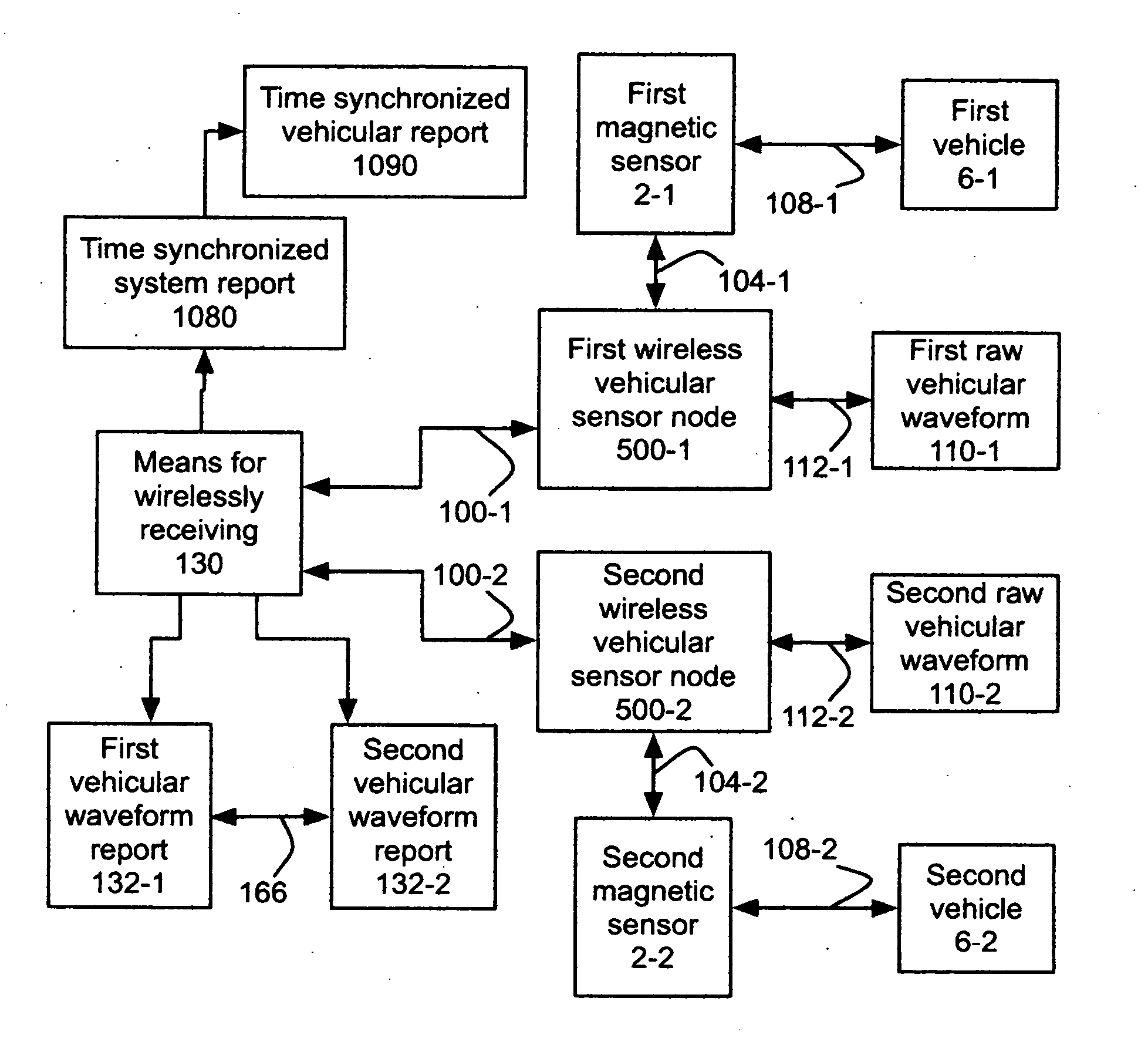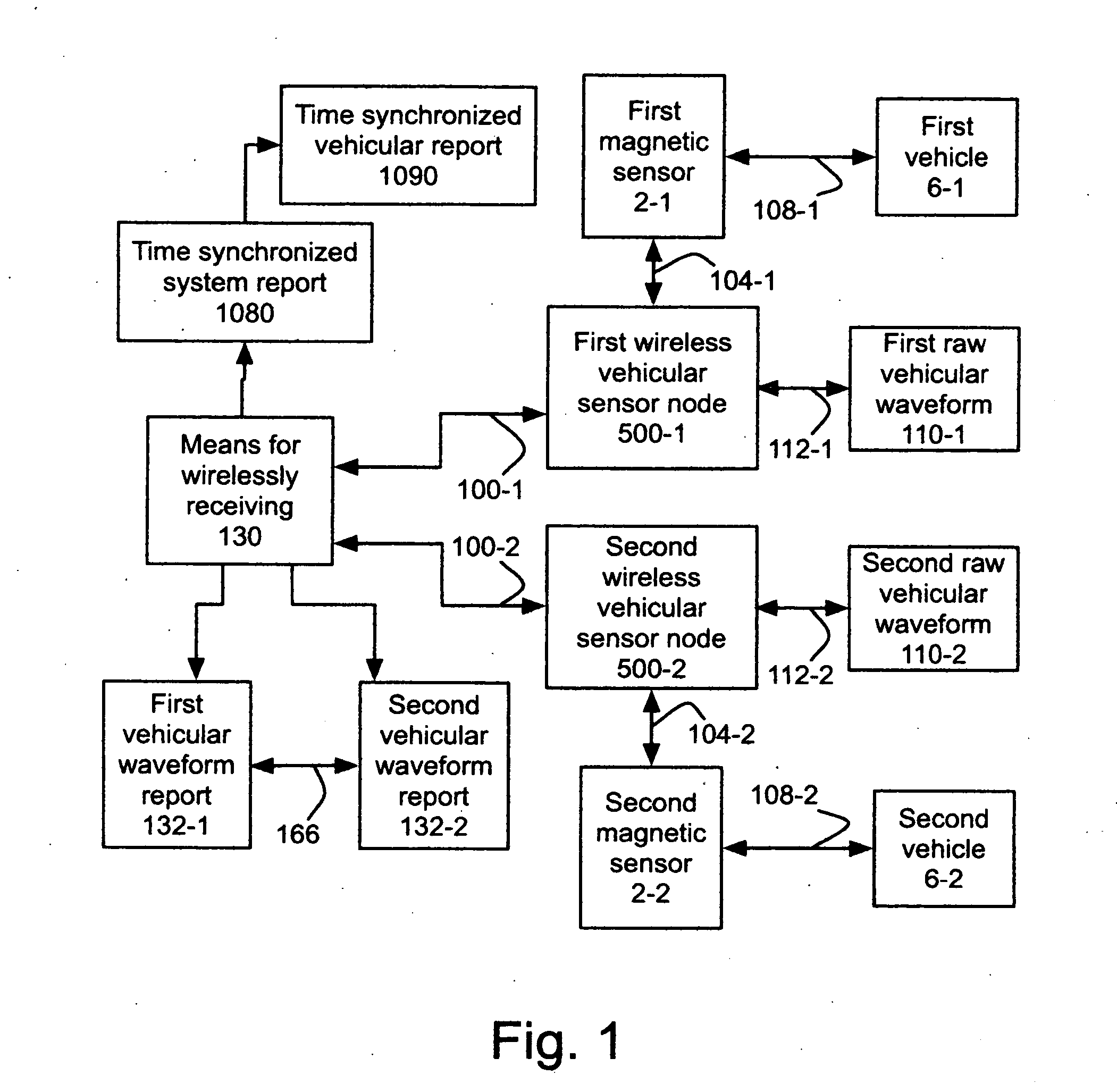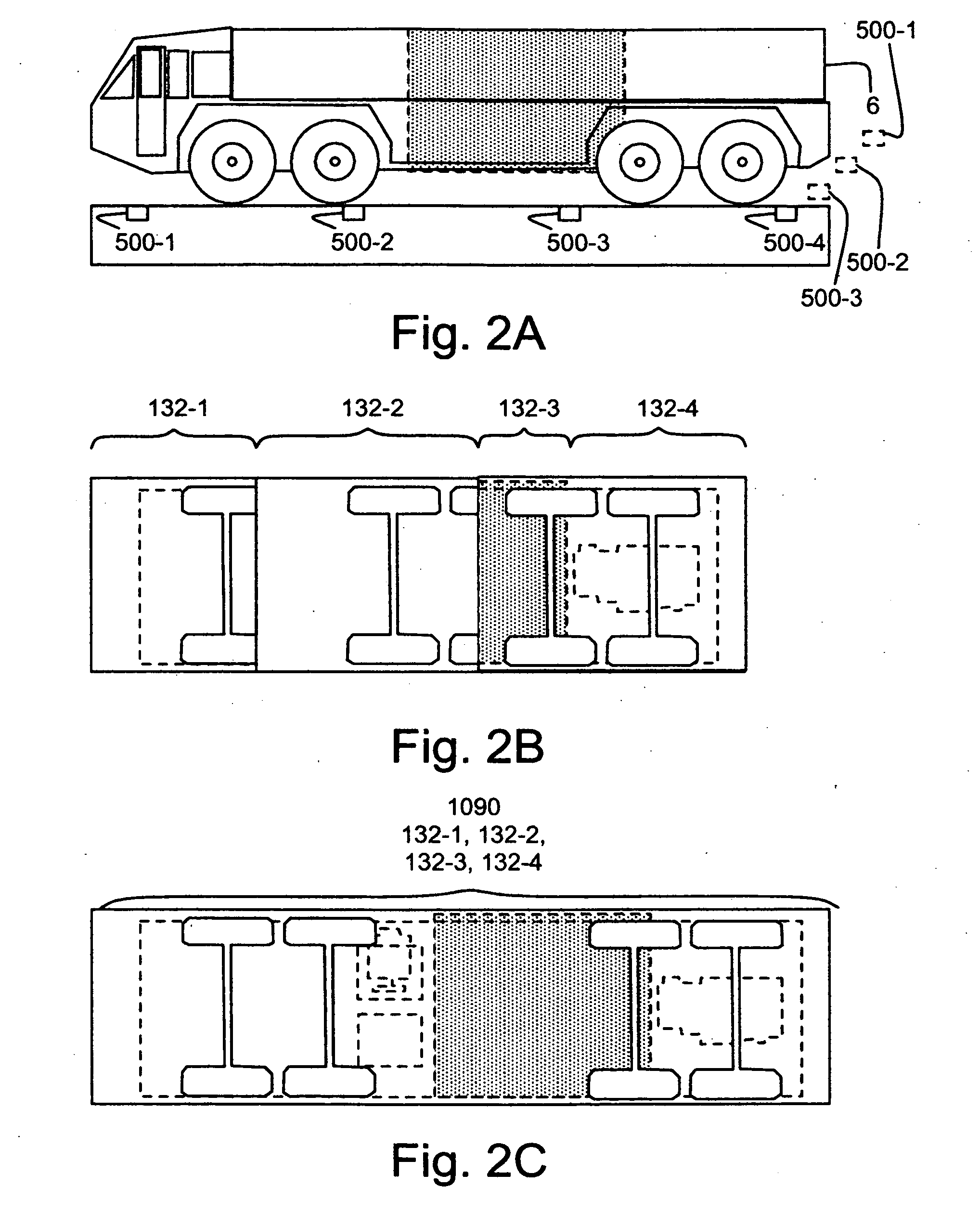Method and apparatus reporting time-synchronized vehicular sensor waveforms from wireless vehicular sensor nodes
a vehicular sensor and wireless technology, applied in the field of wireless vehicular sensor networks, can solve the problems of difficult running wires to sensors embedded in roadways, difficult to report magnetic signatures, and often unreliable,
- Summary
- Abstract
- Description
- Claims
- Application Information
AI Technical Summary
Benefits of technology
Problems solved by technology
Method used
Image
Examples
Embodiment Construction
[0033] This invention relates to wireless vehicular sensor networks, in particular, to the reporting of the waveforms approximating the raw sensor readings due to the presence of motor vehicles. The invention includes using multiple wireless vehicular sensor nodes to wirelessly receive multiple time-synchronized vehicular waveform reports from the wireless vehicular sensor nodes. By way of example, the invention uses a first wireless vehicular sensor node 500-1 and a second wireless vehicular sensor node 500-2 to wirelessly receive 130 a first vehicular waveform report 132-1 from the first wireless vehicular sensor node time-synchronized 166 with a second vehicular waveform report 132-2 from the second wireless vehicular sensor node to create the time synchronized system report 1080 as shown in FIG. 1.
[0034] Time synchronization supports a more rigorous analysis of the vehicular waveform reports, due to essentially the aligning the times of successive samples of the reports. Consid...
PUM
 Login to View More
Login to View More Abstract
Description
Claims
Application Information
 Login to View More
Login to View More - R&D
- Intellectual Property
- Life Sciences
- Materials
- Tech Scout
- Unparalleled Data Quality
- Higher Quality Content
- 60% Fewer Hallucinations
Browse by: Latest US Patents, China's latest patents, Technical Efficacy Thesaurus, Application Domain, Technology Topic, Popular Technical Reports.
© 2025 PatSnap. All rights reserved.Legal|Privacy policy|Modern Slavery Act Transparency Statement|Sitemap|About US| Contact US: help@patsnap.com



